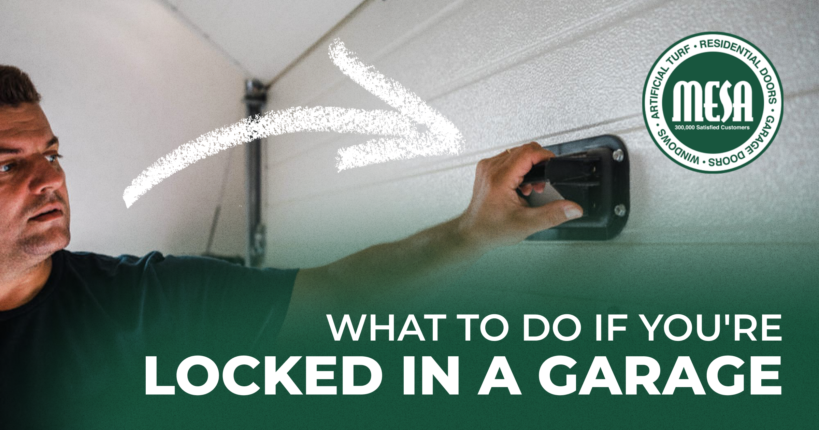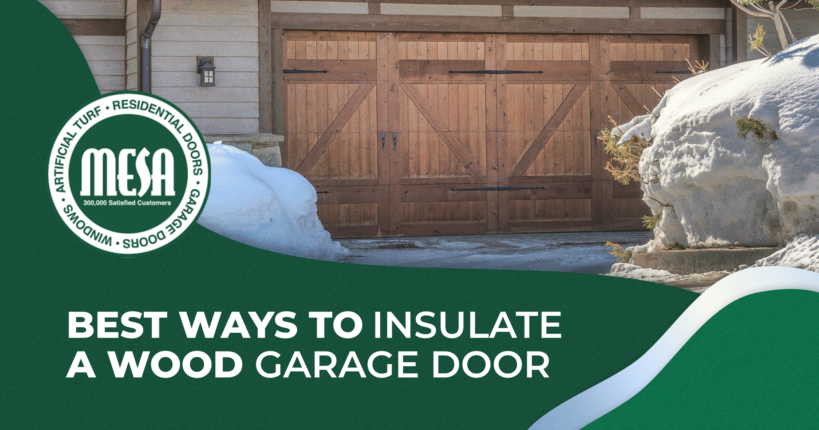What to Do If You’re Locked in a Garage
Modern automatic garage doors are convenient. But for many reasons, a garage door can get stuck, and sometimes this is while you and your car are still in the garage. This isn’t fun when you need to get to work, have an appointment, or are on a tight schedule. If you get locked in the garage, here are some things you can do to escape this sticky situation.
Try to Open The Garage Door Manually
Check that the door is fully closed and disconnect the garage door opener from its power source. This ensures motorized components won’t suddenly activate and avoids any electrical hazards. Then pull the emergency cord, which is typically a red rope with a handle. This will release the trolley from the rail so the door won’t be connected to the garage door opener.
When the door is in manual mode, lift the door straight up with both arms. Make sure it stays put where you leave it, before letting go. The door should stay in place as long as its springs are properly balanced. If it becomes crooked or falls, there’s likely a damaged spring so call a professional to fix the issue and resolve any safety risks.
To restore automatic mode, close the door manually until the bottom is level with the floor. Lock the door by sliding the lock bar and reconnect the garage door opener. Release the manual lock to avoid damage when the electric opener is operating.
Troubleshoot the Problem
A garage door may not operate for simple reasons. If you’re locked in the garage, you can try the following steps:
- Use the Wall Switch: Instead of the remote, try opening the door by flicking the wall switch.
- Replace the Batteries: Install new batteries in the remote control and try opening the door again.
- Check the Electrical Connection: If the opener is unplugged, put the plug back in the socket; if a breaker has tripped, reset it.
- Check the Garage Door’s Sensors: The door won’t open if the safety sensors on its sides are dirty or not directly facing each other. Clean them or bend the units back into alignment.
What to Do If There Is a Mechanical Issue
You can get locked in a garage because the door is off the tracks. In this case, you may not even be able to lift it manually. Attempting to operate the door at this point can cause additional damage, such as broken door panels.
To avoid costly repairs, check whether only one roller is slightly misaligned or multiple rollers have fallen off the track. If it’s only one roller, set the door in manual mode and bend the track open with pliers to fit the roller back in. Then bend the track back into place. Check that it works by opening and closing the door a couple of times.
If multiple rollers are affected, contact a garage door repair professional.
A broken spring can also cause the garage door to get stuck closed. Garage door springs endure intense pressure when moving the door and serve as a counterbalance. Attempting to adjust or fix the torsion springs yourself is way too dangerous. This can lead to severe injury. To play it safe, call a professional who can safely and quickly fix the problem.
Contact Mesa Garage Doors
We repair garage door springs, openers, panels, cables, tracks, rollers, and any other component that needs to be fixed. Our qualified technicians service most makes and models of garage doors and garage door openers in the Los Angeles area. If you’re locked in your garage, you need a professional fast. Fortunately, you can count on Mesa Garage Doors. Contact us for a free repair estimate or call us 24/7 at (714) 364-4987.




